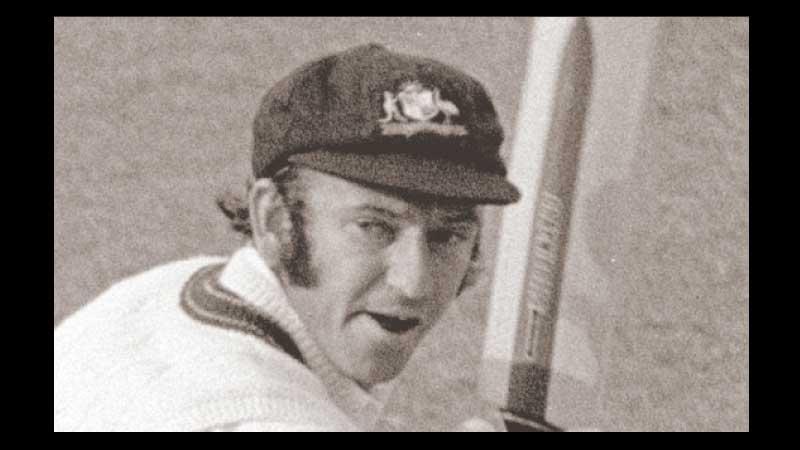
My first-ever cricket picture scrapbook shows that my collection began on March 8, 1965. The scribbling of the date, made with a child’s unsteady hand, still reminds me of those halcyon days.
As a little lad, I listened to cricket broadcasts. “This is Radio Australia, transmitting the overseas service of the ABC, bringing you ball-by-ball commentaries of the first Test between England and Australia, from Brisbane…You are listening to Alan McGilvray.”
In the year 1965, my first cricketing hero arrived on the scene. He was Kevin Douglas Walters. He was 11 days short of his 20th birthday when he was rushed into the Australian Test team to face the touring Englishmen under Mike Smith. Smith’s team had visited Colombo on their way down under and I followed their travails closely.
Reeling off two consecutive centuries in his first two Tests against Smith’s team, Dougie emerged as the ‘new kid on the block’ in 1965.
From that fateful day - December 10, 1965 - I began a life-long relationship – a distant adulation - with Dougie. I collected all kinds of information about him, pictures, articles, anecdotes and statistics. Over the next 40 or so years, Doug became one of the most respected and admired Australian cricketers, a legend in every sense of the word.
When we emigrated to Australia in July 1993, we settled in Sydney’s Baulkham Hills. I commenced a research career at West Ryde in January 1994. Cricket was the fastest route to making friends and ‘integrating’ with the dominant, white Australians. Many shared my love for the game.
It may now sound bizarre, but, incredibly, our family’s first drive-out, from Baulkham Hills to regional New South Wales, was to Dungog, to see where Walters grew up.
After we arrived at Dungog, we turned up at the Visitor Information Centre in the middle of the township. A kind lady was amused by my question regarding where the famous cricketer once lived. After a brief pause, she recalled who this important ‘Dungog person’ was. She cautioned the farm where Doug grew up was not available for visitations.
Dougie was born on December 21, 1945. It is said that the hard work on a farm allowed him to develop those strong forearms and other muscles from a young age. Apparently, he learned to play cricket on an ant-bed pitch his father made. I imagined Doug growing up in this environment as a sturdy lad, unburdened by the shenanigans and politics of NSW State and Australian cricket in general.
Doug played 74 Test matches (121 Innings) between that memorable 1965 debut and 1981. Interrupted by two years of National Service around 1967-68, he still amassed 5,357 Test runs at an average of 48.26 with 15 centuries with two double hundreds.
He also took 49 Test wickets and 43 Test catches. As a partnership-breaking bowler, Bob Simpson, Bill Lawry, Ian, and Greg Chappell, who captained him in Test cricket, used him frequently to ‘pluck’ a wicket from nowhere. His deeds are part of Australia’s cricketing resurrection in the 1960s and, after that, into the 70s and 80s.
At 17 years and eight days, he first represented NSW against Queensland in 1962. At 19 years, Doug also became the youngest Australian to score a double-century in First-Class cricket. Many other records followed. He hit a century in a session three times in his Test career. He was also the first Australian to score a double hundred and a century in the same Test in 1969 when he scored a superb 242 and 103 against Garry Sobers’ West Indies at the SCG.
Doug was a regular member of the Australian team until 1977, when he, along with the most prominent Aussie cricketers, joined the Kerry Packer circus of World Series Cricket. Following this interruption, a surprise recall against India in the summer of 1980-81 got him back to the international fold against Pataudi’s Indians. When the selectors overlooked him for the Ashes tour to England, Doug took this rejection with good grace and announced his retirement prematurely.
On another fateful day, in August 2007, I pumped into one of Doug’s sons – Brynley, through my environmental work. The unmitigated adulation in my voice, combined with some titbits and a few anecdotes, got his attention. Brynley arranged for me to visit Doug at his home in Carlingford. I was elated!
A few days later, I went to meet Doug at his home. We greeted each other with a firm handshake and he gratefully accepted my gifts of beer and wine. We got talking as if we had known each other for long!
The room was full of memorabilia of Doug’s life. An unmistakable aura of nostalgia hung in the room, along with the smell of tobacco. It intuitively appealed to a fan like me. I showed Dougie some magazines and pictures I had, which impressed him.
Quietly-spoken but full of wit and humour, Doug was on full throttle with cricketing memories, through the evening. He was eager to respond to my keen queries on both his exploits and other cricketers.
We discussed two other people I idolized when young – Bob Simpson and Ian Chappell and their influence on Australian cricket. We agreed on most points. When I said Chappelli was quite popular in the speaking circuit: “…What? Ian? Nah; No one would cross the road to listen to Ian...” I think he was being playful and mischievous and meant no offence to Ian, who he said is a great friend.
I told him I was listening at Moratuwa on December 14, 1974, when Bob Willis bowled that last ball of day two in the second Test at the WACA in Perth. Dougie smacked it for a six to reach his century between tea and stumps.
Dougie received an MBE for his service to cricket. In 2011, he was inducted into the Australian Cricket Hall of Fame, a fitting tribute.
